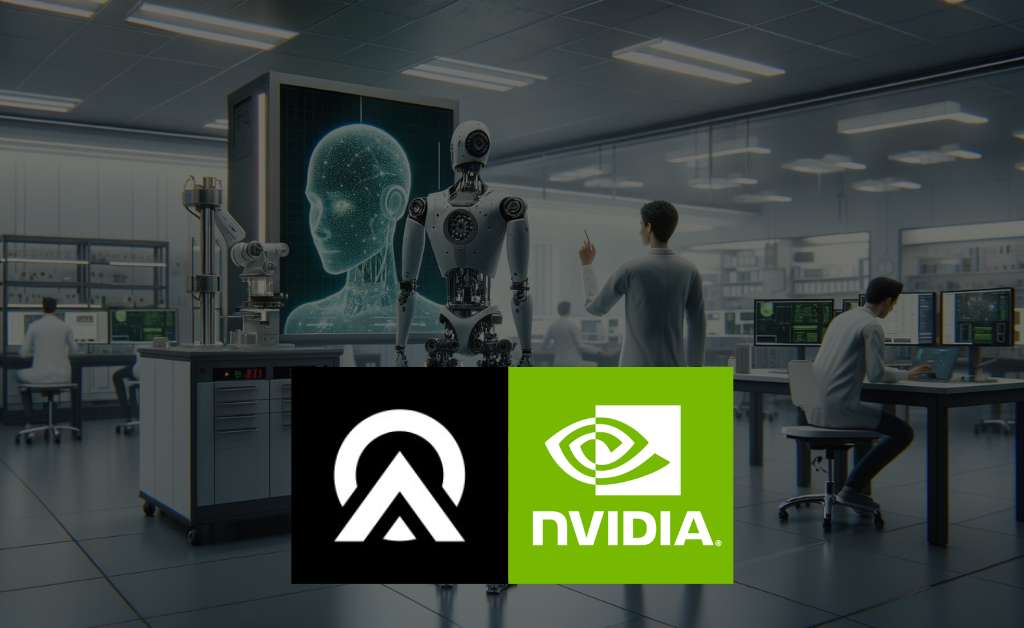
Apptronik Collaborates with NVIDIA to Advance AI for General-Purpose Humanoid Robots
Apptronik, a leader in next-generation general-purpose humanoid robots designed to change the way we live and work, today announced its collaboration with NVIDIA to enhance humanoid robot learning.
Apptronik’s Apollo humanoid robot will integrate with NVIDIA’s new general-purpose foundation model for robot learning, Project GR00T, to make possible a humanoid robot-augmented future that will better serve humanity.
The world is designed for humans – so it makes sense that humanoid robots are the type of robot best equipped to navigate, adapt, and interact with it. Furthermore, humanoid robots comprise the ideal hardware for learning general-purpose skills by observing human demonstrations.
The combination of Apollo and Project GR00T will enable developers to take text, video, and human demonstrations as task prompts, learn generalizable skills like coordination and dexterity, and generate actions as output on the robot hardware.
Instead of simply repeating the actions in the training data, Apollo will recognize the environment and predict what to do next to achieve its goal.
The press release said, that an example of this type of learning, demonstrates how Apollo, through its integration with the GR00T foundation models, learned how to autonomously operate a juicer and serve juice to a person.
Apollo’s main computing system, including onboard NVIDIA Jetson AGX Orin and Jetson Orin NX modules, enables the AI-powered robot to efficiently leverage cutting-edge models such as GR00T to perform a wide variety of tasks, while its humanoid form allows it to learn from human demonstrations.
This results in faster skill development, advancing the field of general-purpose robots as Apptronik continues to develop its next-generation robotics computing platform. Apptronik will leverage NVIDIA’s portfolio of AI offerings for humanoid robots, including the new GR00T foundation models, Isaac Lab, and the OSMO compute orchestration service, announced at GTC.
“Generative AI is currently used to generate text, images, and video. The next frontier is to leverage these AI tools to generate intelligent humanoid robot behaviour,” said Jeff Cardenas, co-founder and CEO of Apptronik.
“In addition to our internal efforts, our collaboration with NVIDIA will combine the superior hardware design of our Apollo humanoid robot with NVIDIA-powered multimodal learning from demonstration – particularly video demonstration. We believe this combination has the potential to change the world and benefit all of humanity.”
Apollo, which launched in August 2023, is the first commercial humanoid robot that was designed for friendly interaction, mass manufacturability, and safety, and is built to transform the industrial workforce and beyond in service of improving the human experience.
This is fueled by Apptronik’s combined decades of experience building over 10 robotics systems, from exoskeletons to industrial robotic arms, bi-pedal mobility platforms, and full humanoids.
Apollo’s design provides superior scalability, cost, power efficiency, manufacturability, and supply chain resiliency:
- Operating much in the same way that human muscles work, Apollo is the only humanoid robot to use linear rather than rotary actuators.
- Apptronik’s unique force control architecture allows Apollo to maintain safe arm movement around people, similar to a collaborative robot versus a regular industrial robot.
- Apollo’s hot-swappable battery, each with a four-hour runtime, removed the need for a plug-in charge that would take Apollo out of action, thus providing the most operational time of any humanoid robot.
- The modular design of Apollo enables upper-body humanoid robot deployment on legs, a wheeled base, or a pedestal which allows it to operate in whichever form is most useful for a desired task.
Apollo represents a novel approach to humanoid robot design and is purpose-built to break through the technological and performance ceilings that have prevented past generations of humanoid robots from making a significant impact. This allows for a new level of function, efficiency, and scale along with a force control architecture that makes it possible for Apollo to operate side by side with people and perform useful tasks.















